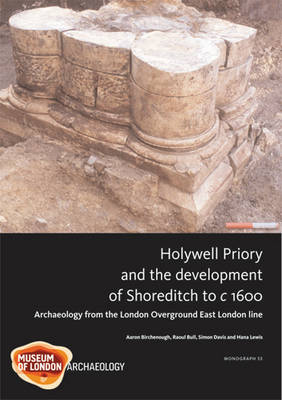The upgrade and extension of the East London Line created an opportunity for archaeologists to discover more about Shoreditch. Archaeological investigations followed the route from Holywell Lane to Bishopsgate Goods Yard and Pedley Street and this report integrates new discoveries with earlier findings to reveal the landscapes concealed beneath modern-day Shoreditch. This was the agricultural hinterland of Roman Londinium and Roman burials and features were discovered near Ermine Street. In the 1150s, fields and moor were transformed by the foundation of the Augustinian nunnery of Holywell, known as Holywell Priory. Located west of what is now Shoreditch High Street, Holywell was the ninth richest nunnery in England at the Dissolution. Sir Thomas Lovell established a residence within its precinct and was buried in the priory church in 1524. Properties associated with religious precincts like Holywell and St Mary Spital defined the early London suburbs. Stratton House was established to the east in the later medieval period and typical of increasing ribbon development; it was followed by construction of the Great House and Stone House.
The wealth of the mansions' occupants is indicated by the exceptional collections of hunting, bird and dog bones recovered. Analysis of the relationship of these properties before and after the Dissolution has allowed for greater understanding of the processes of suburban development in London.
- ISBN10 1901992993
- ISBN13 9781901992991
- Publish Date 1 June 2012
- Publish Status Out of Print
- Out of Print 2 December 2016
- Publish Country GB
- Imprint Museum of London Archaeology
- Format Hardcover
- Pages 192
- Language English
